It was by coincidence that earlier this year I spent an unhealthy amount of time researching a specific trio of watches, of which I was told existed in the wild but had no record of their making within the F.P.Journe archives. It was through a conversation I had with Mr. Journe in October 2018 that I first heard the words “Octa prototype” which caught my attention, though I had no further information regarding what was meant, except that it was just that, a real prototype that was in private hands.
As the months passed, I began to dig further into the Octa prototypes and finally confirmed all the details with the latest release of the Phillips New York Game Changers catalogue.
Released only last month, the 73rd lot in the auction is an F.P.Journe Octa that looks like any other but if you look closer, it reveals much more. For more details on the Octa caliber in general, please visit “A Movement That Created a Collection: The Octa.”
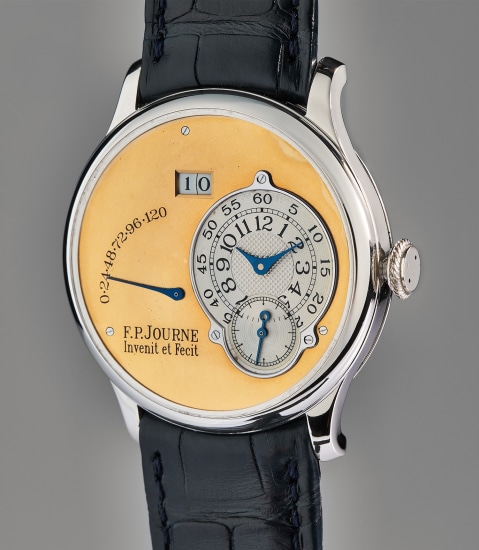
Baselworld 2000
Upon inspection, you will notice that the case of the watch is marked Proto/00 A, with the last digits indicating the case was made in 2000, a year prior to the 2001 official release of the Octa Réserve de Marche. This brings us back to the start of the watch, in 2000 at Baselworld.
The show would be only the second for the newly established brand and that year, François-Paul exhibited the Tourbillon Souverain (1999), the new Chronometre A Résonance, and a unique Sonnerie Souveraine made with the last movement he had developed for Piaget and which sold immediately to the collection of the Sultan of Oman.
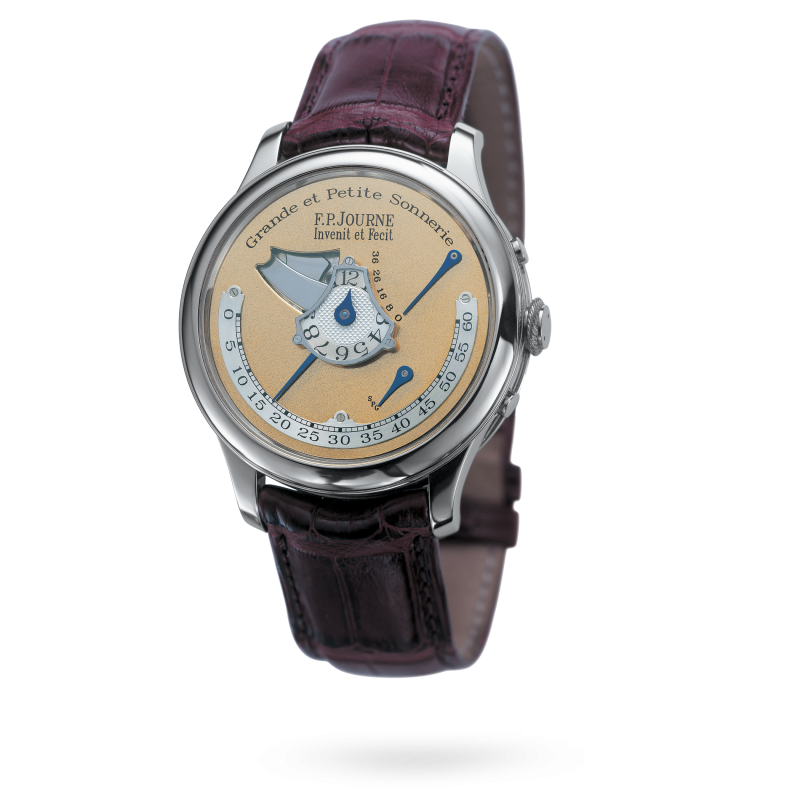
At the time, Journe found it to be necessary to exhibit a preview of models to come, something scarcely seen in more modern times. To him, his new brand had to prove that it wasn’t simply grasping onto two watches but had a substantial vision ahead of it. Thus, alongside the collection, he prepared a total of nine prototype watches to be displayed. The prototypes were there for the show and consisted of three watches each of three upcoming models, namely the Octa Réserve de Marche, Octa Chronograph, and Octa Calendrier.
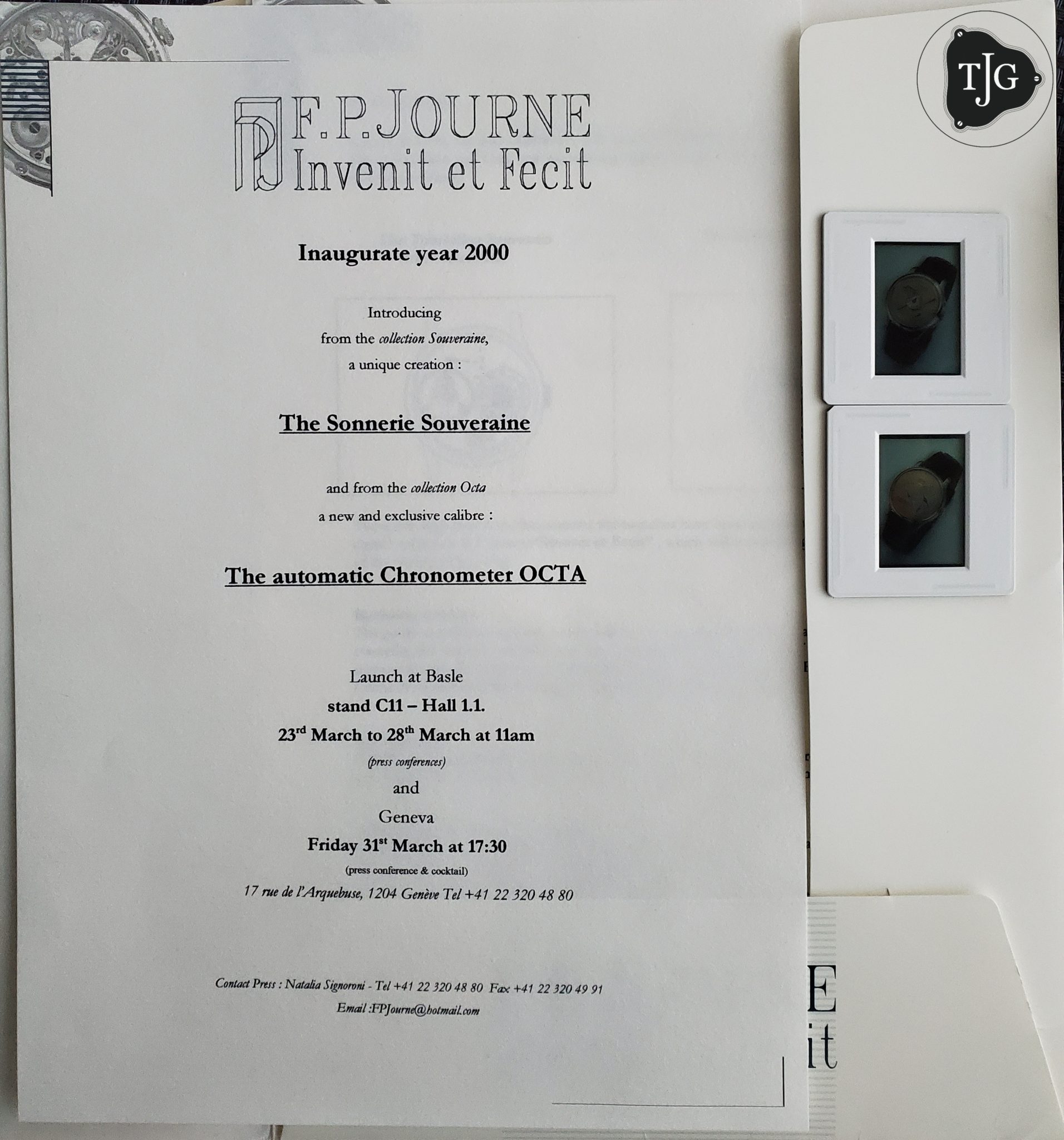
The nine watches weren’t fully functioning pieces but were simply prototypes, of which the star among them was the Octa Réserve de Marche (RDM), which received a semi-official soft launch with a full press release. The Octa Chronograph and Octa Calendrier at the time had the same base caliber as the Octa RDM but the entire complication side of the movements were not functional. The dials further looked completely different with the Calendrier apparently using paper beneath the dial to represent the calendar apertures.
Of the three models, I could only come across a photo of the Octa RDM and Chronograph, with no reported photo of the Calendrier to be found.
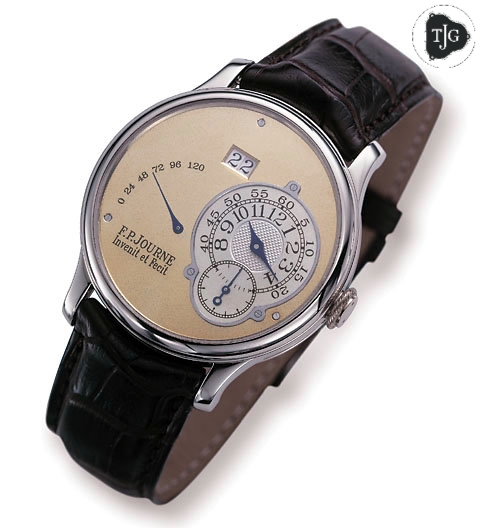
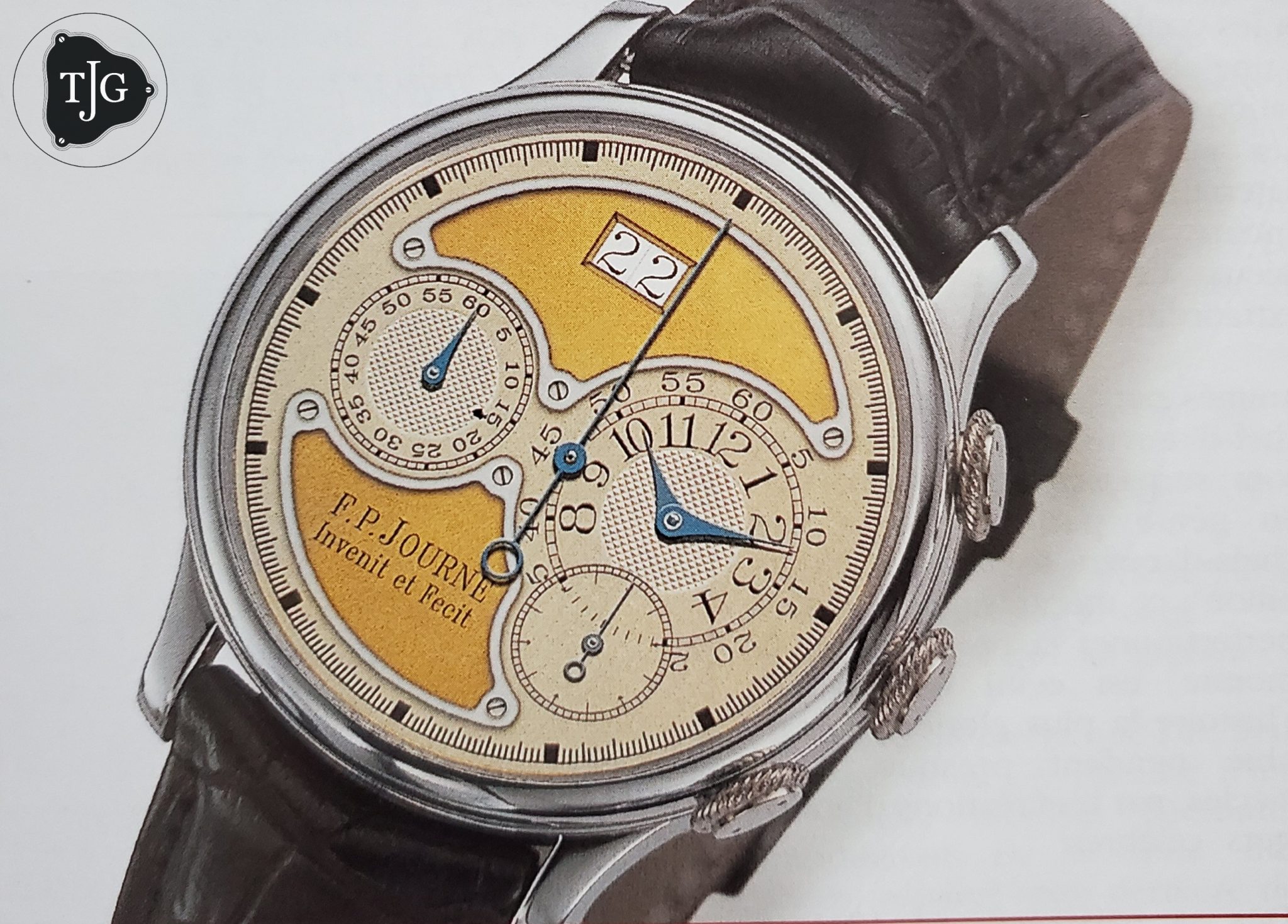
After Basel
After the show, the Octa Calendrier and Chronograph prototypes were completely dismantled and destroyed, hence they no longer exist.
On the other hand, Journe kept the three Octa RDM pieces in his drawer where they would stay, unrecorded until…
In 2003, Journe decided to gift two of the three watches to his friends/employees at the time. Before doing so, he changed the dials to a production dial, including the date disc, and engraved the movement bridges with the caliber name. As the watches were born with the serial __/00 A, he had the word “Proto” engraved onto the cases thus they became “Proto/00 A”.
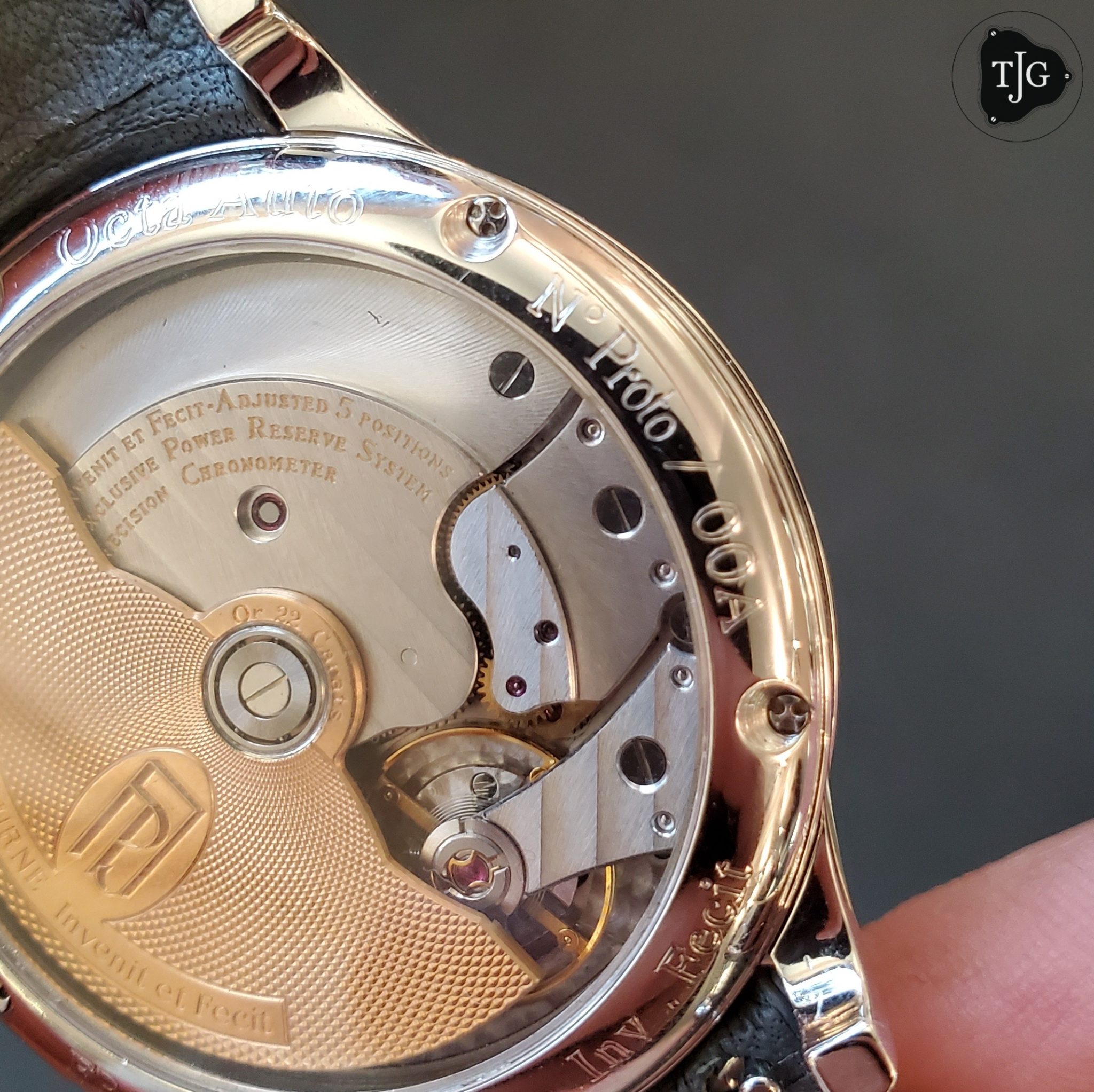
At a later date, the third one, which was Journe’s personal prototype was placed into private hands, though of the three, it remains the only one to be in the most original condition, retaining the original dial, and with no case/movement engravings. All three watches were cased in 38 mm Platinum cases with 18K yellow Gold dials, and were put together by Mr. Journe himself.
It is important to note that since the watches are prototypes, they do not function flawlessly with regards to the power reserve indicator which required further tweaking before making production.
Phillips Lot 73
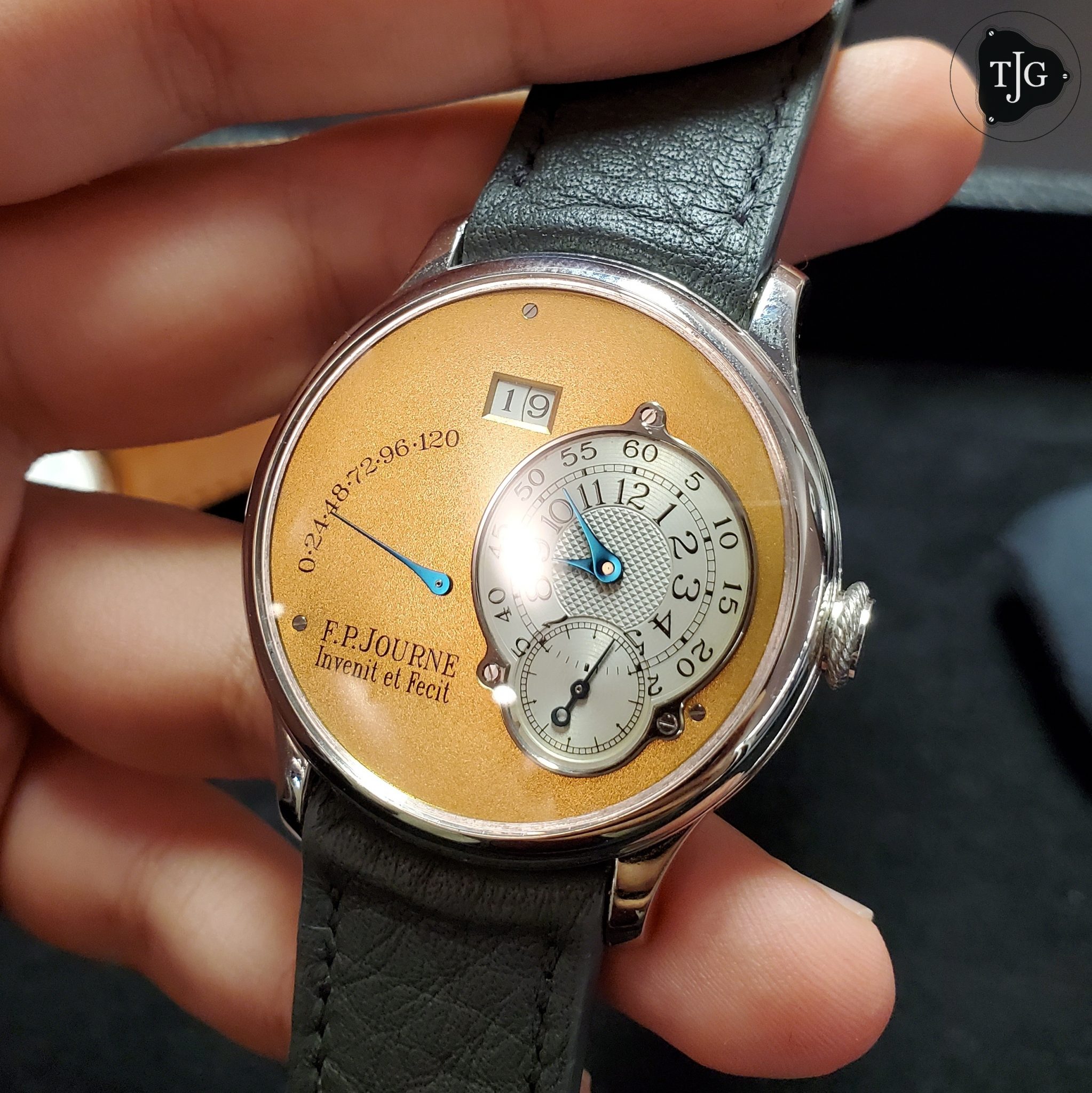
Prior to the reveal of the Octa Prototype at Phillips, the existence of these watches was deemed more of an acquired legend, with none but François-Paul, the owners, and probably myself who knew of their existence. I had seen a photo of the original prototype before, but whether it had existed or not was a topic of mystery.
In fact, Phillips had first taken the watch to Mr. Pierre Halimi, GM of F.P.Journe America, to verify the watch to which even he didn’t know its origin.
The current example of the Octa Prototype will be auctioned at Phillips game Changers on December 10th, in New York. The watch is in immaculate condition with a stunning shiny yellow dial, whose grain is extremely difficult to capture through a lens.
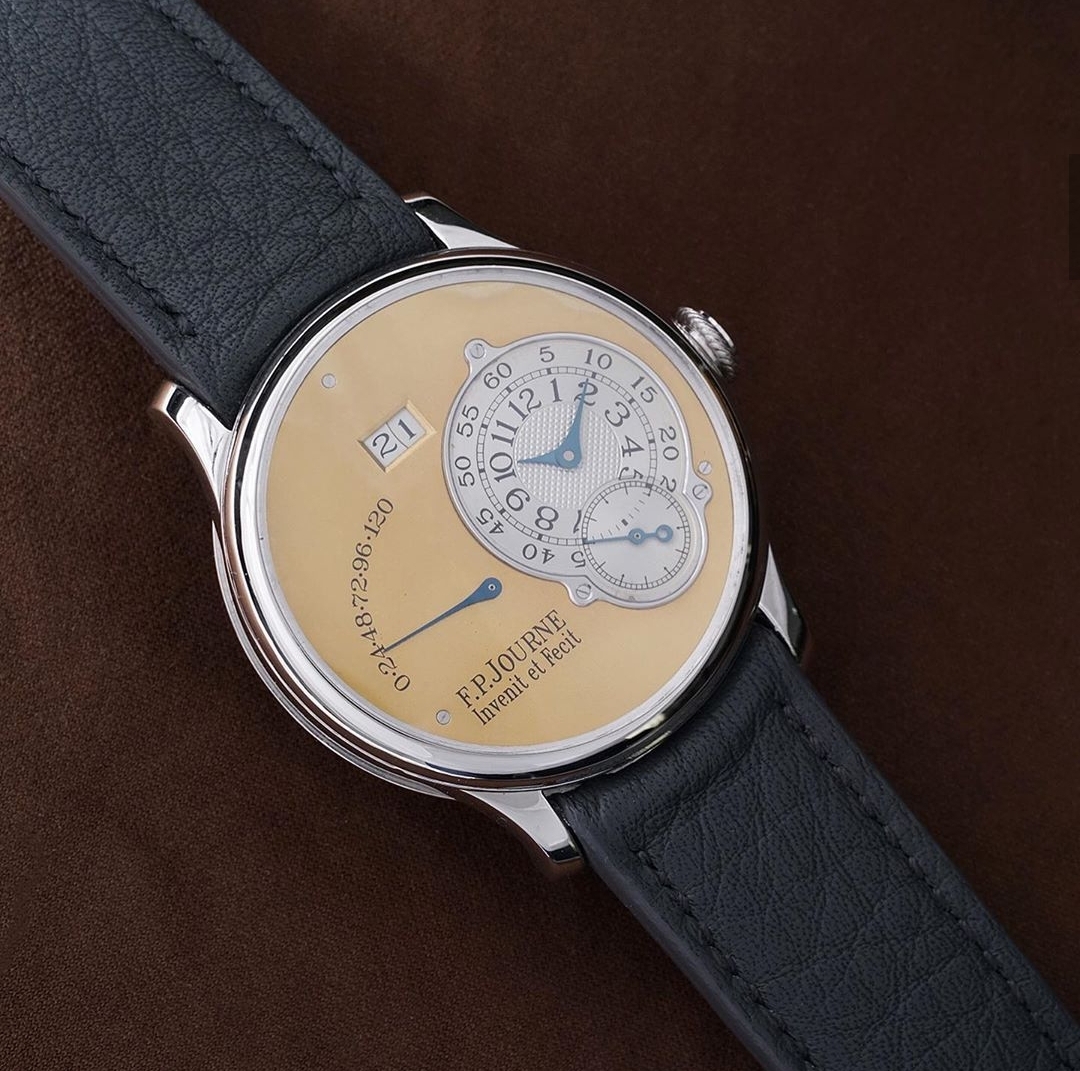
The estimate on the watch is between $30,000 – $60,000 though I would not be shocked if it well exceeded that. It has never before been seen publicly, and will likely not appear again in the near future.
While more recently, Journe presented the Astronomic Blue Prototype for Only Watch which fetched $1.8M, some argued it wasn’t really a prototype as a watch made to be functional and uniquely gifted for the charity auction. I won’t get into that debate for the purpose of this article but aside from that, there is only one other time we had seen an F.P.Journe prototype hit the market, and that was a Resonance in 1999, of which is another discussion for another day.
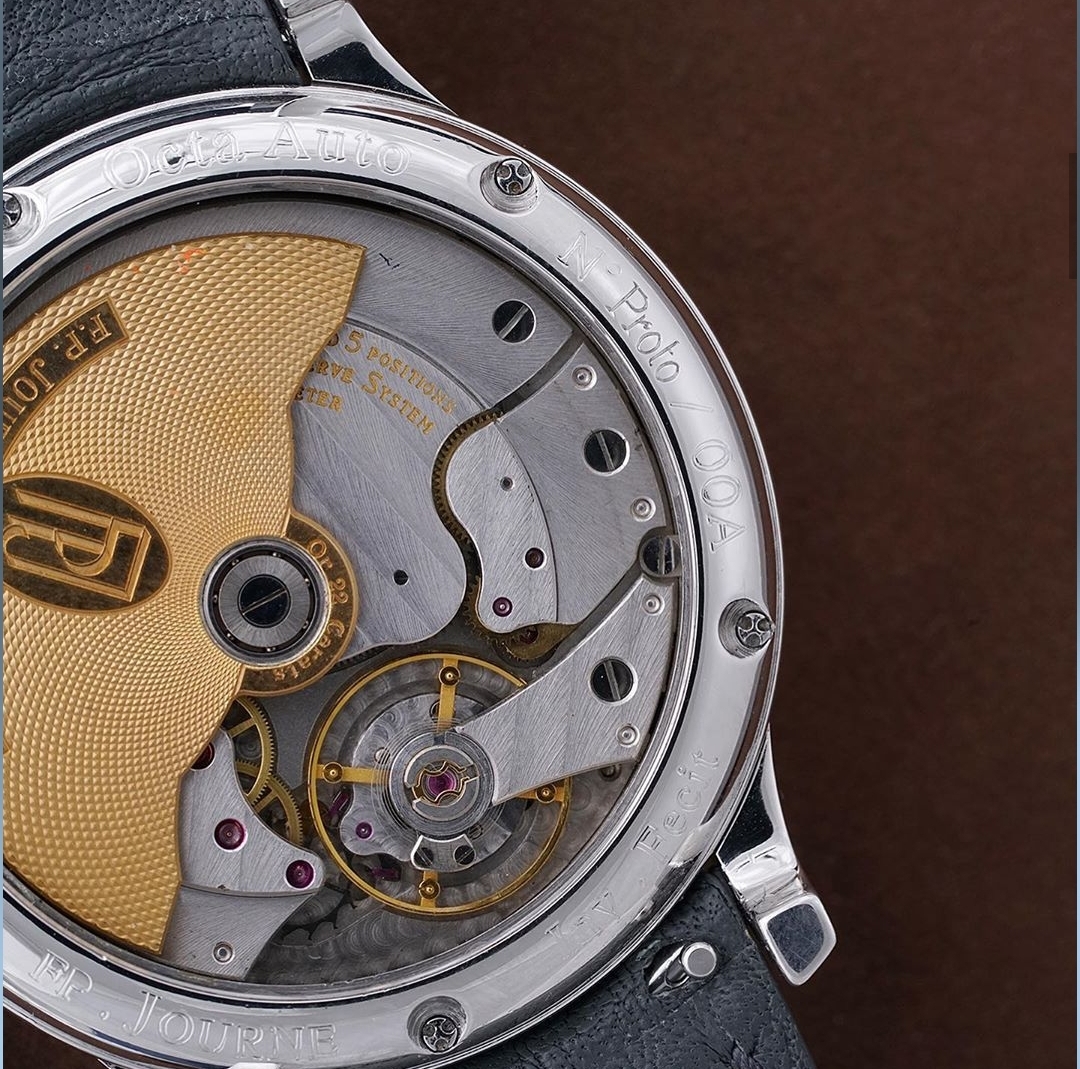
To validate the watch, F.P.Journe and Phillips have included a Certificate of Authenticity alongside the watch for the sale.
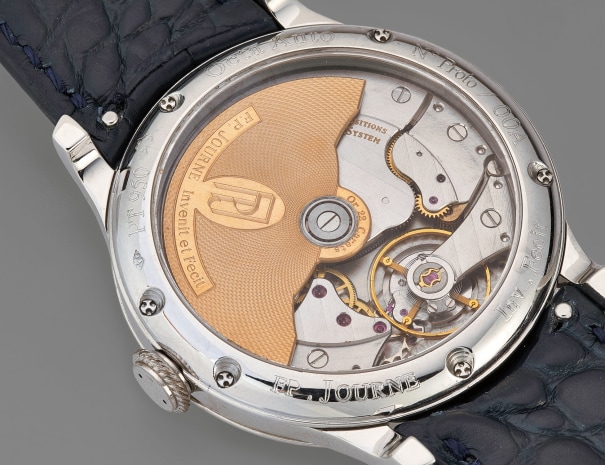
One response to “Behind the F.P.Journe Octa Prototype”
Awesome post! Keep up the great work! 🙂